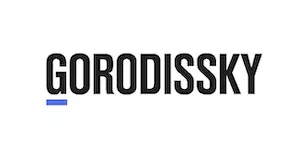"Translation is the art of failure" - Umberto Eco
Nowadays, to ensure appropriate protection of one's intellectual property, one should often consider going well beyond the borders of one's businesses' country of residence. This often involves a translation from one language into another, and not seldom these languages drastically differ in terms of their linguistic structure and vocabulary. The scope and spirit of a subject matter of intellectual rights is defined by a text. It is the text that strictly outlines the scope of one's intellectual rights, and any given word in this text may have a multimillion price. What happens when this word is wrong can easily be imagined.
Translations are burdensome and costly, sometimes exceeding the other expenses in the course of prosecution of a patent application in a given jurisdiction. High complexity and costs cause clients to search for ways of saving money and time on translations, but this has strings attached. Most importantly, reducing translation costs compromises the quality of translations and, hence, increases the occurrence of translation errors.
In its essence, a translation is not just about placing a word in English instead of a word, say, in Chinese. Word-for-word translations are never adequate. Translating a text means first interpreting it, i.e., extracting its specific meaning to the most subtle detail, and then conveying this meaning in another language in a manner which, on one hand, is grammatically, stylistically, technically and legally correct in terms of the "target" language, and, on the other hand, most precisely reflects the spirit and scope of the "original" text. Translation, whether performed by a human interpreter or an automatic tool, is prone to errors that have consequences. Among the latter, one may name failure to complete the examination procedure and achieve patent grant, invalidation of a granted patent due to mistranslations, denial of efforts at rectification of translation errors discovered after the grant of a patent, and scope of protection under the granted patent being drastically different from the intended scope, making the patent worthless.
Translation errors differ in their nature. Among typical errors, one may name two different basic kinds. The first one is "technical" errors, also known as "typographical errors" or colloquially "typos". The second one is related to semantic contents of the text and linguistic peculiarities of languages involved, in particular to a misinterpretation of the original text or failure to use appropriate technical terminology in the "target" language. Both kinds of errors may adversely affect the scope of legal protection, and they need to be rectified. Apparently, the first type of error is easier to correct, and it is undoubtedly better to rectify errors of both kinds (not to mention preventing them) at the stage of filing or prosecution of a patent application, and not after the patent has already been granted. It should be kept in mind that "typos" may have the same adverse effect on the fate of the patent application or on the scope of the granted patent as the more complicated "linguistic" errors.
Translation errors, especially ones that belong to the second aforementioned kind, can "broaden" or "narrow" the scope of legal protection as compared to what was originally sought. The question is: if the scope that was erroneously broadened by a translation error can be narrowed by rectifying the error, can the scope that was erroneously narrowed be retroactively broadened? And if so, from what date shall such a change in scope be effective?
Now we will discuss a few examples of the negative effects of translation errors on the fate of patent applications and patents in various jurisdictions.
A European company that specializes in home interior design solutions was granted a Russian patent based upon a PCT application for a fireplace imitation device, where the phrase "a container adapted to contain a body of liquid" was mistranslated as "a container with a body of liquid". Infringement proceedings were initiated against a third-party infringer who was alleged to be marketing in Russia a product manufactured in a third country, in which the patented invention was used. The infringer maintained that the patented invention was not used in their product, since the allegedly infringing product did not include the body of liquid, unlike the patented invention. All patent owner's attempts to rectify the mistranslation at that stage were to no avail.
THE SCOPE AND SPIRIT OF A SUBJECT MATTER OF INTELLECTUAL RIGHTS IS DEFINED BY A TEXT. IT IS THE TEXT THAT STRICTLY OUTLINES THE SCOPE OF ONE'S INTELLECTUAL RIGHTS, AND ANY GIVEN WORD IN THIS TEXT MAY HAVE A MULTIMILLION PRICE
A patent granted to a European company based on a PCT national phase application was opposed on the grounds of lack of novelty and inventive step. The prior art cited in the opposition recited, inter alia, "average particle diameter", and the same was erroneously recited in the opposed claims, whereas "median particle diameter" was originally indicated, and not "average particle diameter". All patent owner's efforts to rectify the mistranslation by changing "average" for "median" were unsuccessful, and the patent was invalidated in full.
A US patent application was filed claiming priority to an Italian patent application. Instead of filing the Italian patent application with the USPTO, an English translation of the Italian patent application was filed, where an Italian term "semiliquido" was mistranslated as "halfliquid" instead of "semiliquid". In the course of litigation between two parties, the patent granted to the US application was eventually invalidated due to the inaccurate translation of the non-English priority patent application. Notably, as part of the litigation, the patent owner provided a certified translation of the priority Italian patent application that correctly translated the term in question as "semiliquid", but this had no effect.
A PCT application originating from China included a phrase in the claims, which was translated from Chinese into English as "a mobile station enters an edge radio frequency unit of a serving cell". At the national phase in Russia, where a Russian translation was prepared in strict accordance with the English language text, the application was rejected since no technically correct translation into Russian of the abovementioned features was possible, nor was the applicant able to explain how a mobile station can enter a radio frequency unit. In fact, it was meant that the mobile station enters the service range of the radio frequency unit, and not the unit per se, but even citing the Chinese priority application did not persuade the examiner.
Rectifying translation errors in the course of prosecution of an application may be facilitated by a Patent Office, if the latter carefully monitors the clarity of features provided in the claims and/or the specification of an application being considered. In such case, an examiner of such Patent Office may raise translation-related issues in the course of substantive examination of the application. In Ukraine, the examiner pointed out an incorrect translation of German language technical terms "Wabenträger" and "-seite", which enabled the applicant to make timely corrections to the translation of respective terms before a patent was granted.
It should be noted that, in particular, the Patent Office of Ukraine generally accepts requests for correcting translation-related errors from an applicant or patent attorney in case the latter notices such errors in the course of prosecution of the application even when a decision on the grant of a patent has already been issued (but grant fees were not yet paid and the patent has not yet been registered with the Official Patent Register!). By way of an example, mistranslation of term "non-transitory" as "non-transistor" (probably, a misprint) in a Ukrainian patent application was timely noticed by the patent attorney, and the request to correct this error was granted by the Patent Office at the stage of a decision on the grant of a patent. It should be noted, however, that in other jurisdictions correction of such kind of mistranslations may only be possible if the Patent Office points out a mistranslation and suggests an amendment.
These are but a few examples that clearly show that, in patents, it is better to avoid translation errors by making any possible effort to provide a high-quality translation. Some translation errors may be detected when the translation of application materials provided by a client is reviewed by specialists of patent attorney firms. Such checks often reveal mistranslations as well as typographical and other errors in chemical and physical formulas and compounds, which may potentially lead to very serious legal consequences. However, such professional review may require significant resources and significant amendments to the provided translation. Often, the cost of reviewing the translation provided by the client may be comparable to the costs of the translation per se.
Preparation of translations of applications by patent attorney firms, as well as performing reviews of translations by qualified patent attorneys makes it possible to prevent mistranslations as well as detect in advance many other potential issues with application materials, such as defects in drawings, mathematical and chemical formulas and expressions etc. This allows the avoidance of problems during examination, in particular objections concerning clarity, consistency of terminology and, ultimately, industrial applicability. Eventually, costs are thus reduced for the client by ensuring quicker and easier prosecution of an application without extra objections and remarks originating from the Patent Office on translation errors and other similar issues.
But what can we do if a translation error did occur? A typical delusion by some of the applicants who are willing to cut translation expenses is: "PCT and almost all patent laws allow making corrections in translated applications. Therefore, we can always correct our translation, if needed". In fact, Article 46 of the PCT provides that "if, because of an incorrect translation of the international application, the scope of any patent granted on that application exceeds the scope of the international application in its original language, the competent authorities of the Contracting State concerned may accordingly and retroactively limit the scope of the patent, and declare it null and void to the extent that its scope has exceeded the scope of the international application in its original language". In general, the PCT does provide for rectifying an error in translation during the national phase. But, as shown above, actual possibilities of rectifying translation errors in a national phase application, not to mention patent, are limited.
Turning to the European Patent Convention, Rule 139 of the EPC defines three kinds of errors that are amenable to being corrected: (a) linguistic errors; (b) transcription errors; and (c) mistakes. One criterion that must be fulfilled for an error to be allowed to be corrected is that: "the correction must be obvious in the sense that it is immediately evident, that nothing else would have been intended than what is offered as a correction".
AMENDING TRANSLATION ERRORS WHEN A PATENT HAS ALREADY BEEN GRANTED IS NOW GENERALLY NOT ALLOWED
Russian patent legislation has adopted an approach that is quite similar to that of the EPC, in that errors that can be corrected are mainly "obvious" and "technical" errors. Until recently, it was common practice to amend the Russian translation in the course of prosecution of a PCT national phase application "on the basis of the PCT application materials", but now the RuPTO does not generally accept such amendments. Amendments to application materials to rectify translation errors may often be accepted only in case the Patent Office points out issues with translation and suggests an amendment. Even worse, amending translation errors when a patent has already been granted is now generally not allowed.
To avoid problems caused by translation errors, one may name several "countermeasures" against mistranslations which may be generally effective regardless of a particular jurisdiction. Firstly, it is important to ensure stringent quality control of the translation – appropriateness and consistency of technical terminology, linguistic clarity and accuracy of translation in order to accurately reflect the technical and legal intent of the text. Then, routinely reviewing translation quality by internal bilingual or multilingual inhouse individuals with expertise in patent prosecution and litigation is highly advisable. Having a high-quality accurate English translation of a priority patent application may best serve the applicant, especially in cases where there is a non-English priority application and English is only an "intermediate" language, the ultimate "target" language also being other than English. This approach is generally used, in particular, in the case of originally Chinese, Japanese, Korean etc., applications, which enter other jurisdictions via the PCT or by claiming convention priority.
One should also keep in mind the procedural difference of filing a translated application in a foreign country and later providing a certified copy of the priority (original language) application and filing an application in the original language and a translation into the required language. In the former case, referring to the original text in an attempt to rectify a translation error may not work, while, in the latter case, the original text, which is considered to be properly filed as of the filing date of the application in question, would provide a basis for amending the translation, if necessary.
Originally published by The Patent Lawyer May/June 2023
The content of this article is intended to provide a general guide to the subject matter. Specialist advice should be sought about your specific circumstances.


